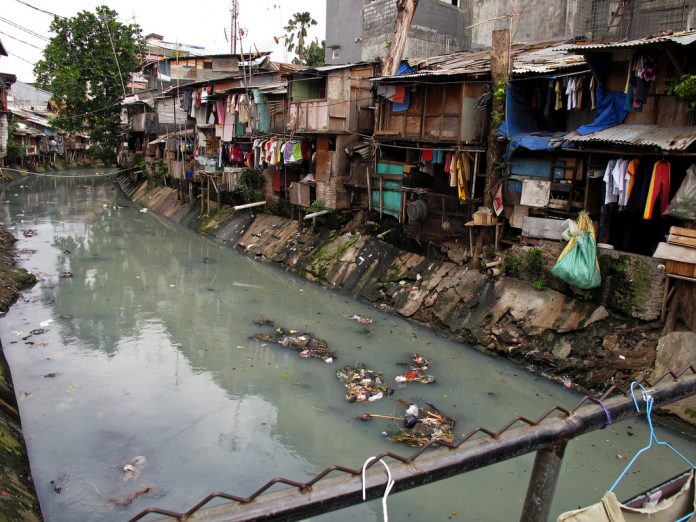
The World Bank and the United Nations have published a report warning that 40 percent of the world is currently affected by water scarcity. The report, entitled Making Every Drop Count, states that around 2.5 billion people – 36 percent of the world’s population – live in water-scarce regions where more than 20 percent of global GDP is produced. “By 2050, more than half of the world’s population—and about half of global grain production—will be at risk due to water stress,” it adds.
Around two billion of the world’s population must resort to drinking undrinkable water while more than 4.5 billion use water that is not safely managed. South Africa’s Cape Town has suffered infrequent rainfall for three years. Hundreds of thousands of its citizens occupy shacks in informal settlements without reliable transport. Cape Town is trying to avoid catastrophe by limiting consumption of water to around 450 million litres per day, though the consequent affects on farmers having to use less water to irrigate their land could lead to inflated food prices. In Asia, the Indonesian capital of Jakarta is gradually losing its supply of potable water while it continues to fend off torrential downpours that have been linked to extreme weather events.
“Climate change is exacerbating natural variability of the water cycle, increasing water stresses that constrain social progress and economic development. Our health, food security, energy sustainability, jobs, cities, and the ecosystems on which all life is based are all being influenced by the way water is being managed in different parts of the world,” the report states. Climate change has led to increasing numbers of hydrometeorological events that move from extremes to either flood or drought.
Around 90 percent of financing for disaster risk mitigation however is directed at emergency response and reconstruction, leaving a shortfall in preparatory measure and resilience. The report adds that: “while US$106 trillion is available through different funds worldwide, only 1.6 percent is invested in infrastructure and even less in initiatives to increase resilience”. “An ambitious global framework is needed to enable public and private sector actors to cost-effectively access, use, and share water and hydromet data. Global and regional solutions can complement country systems since there are interlinked hydrological and climate systems. Such a framework would also make it easier for countries to monitor and report on their progress toward water-related SDGs,” the report concludes.







